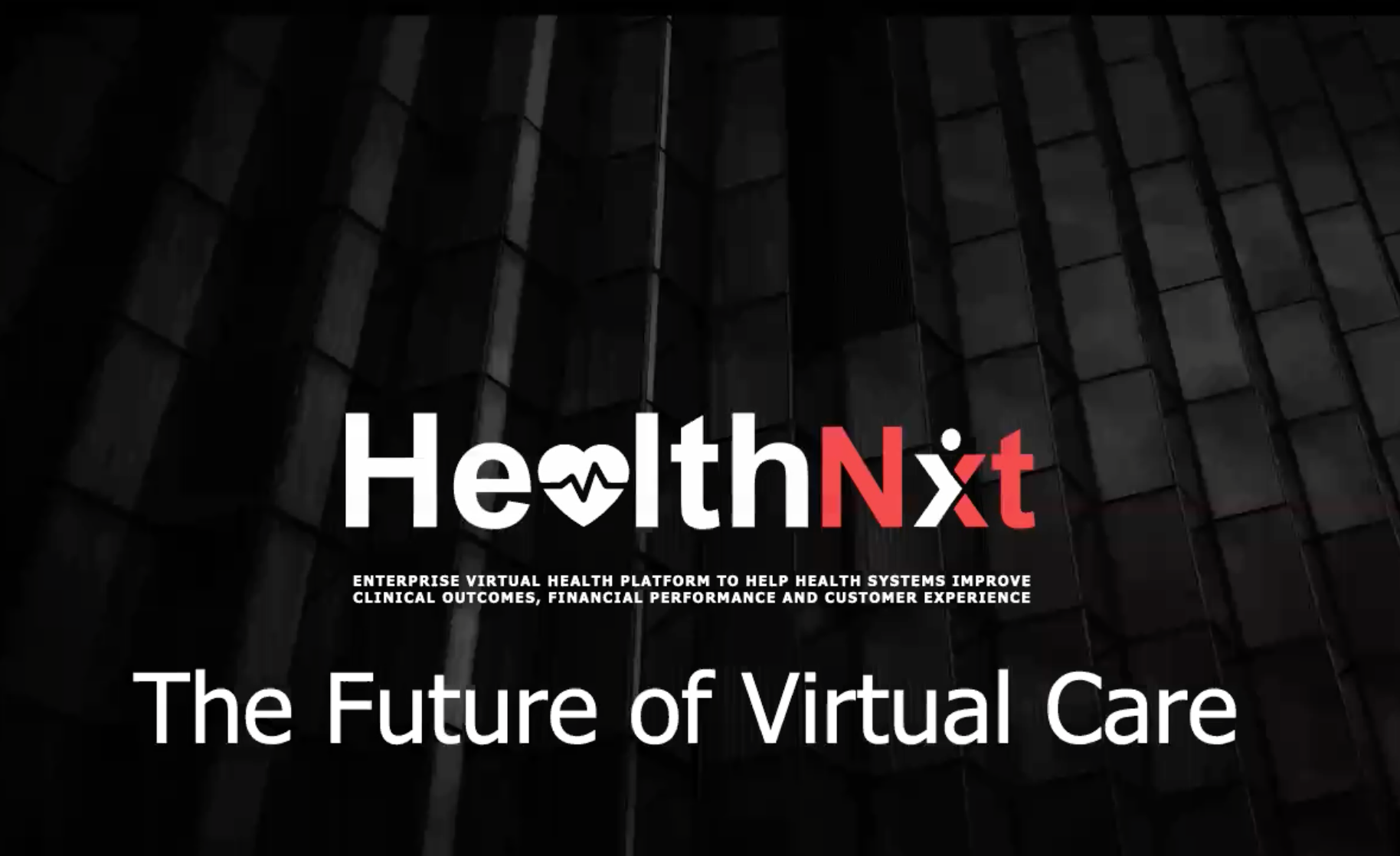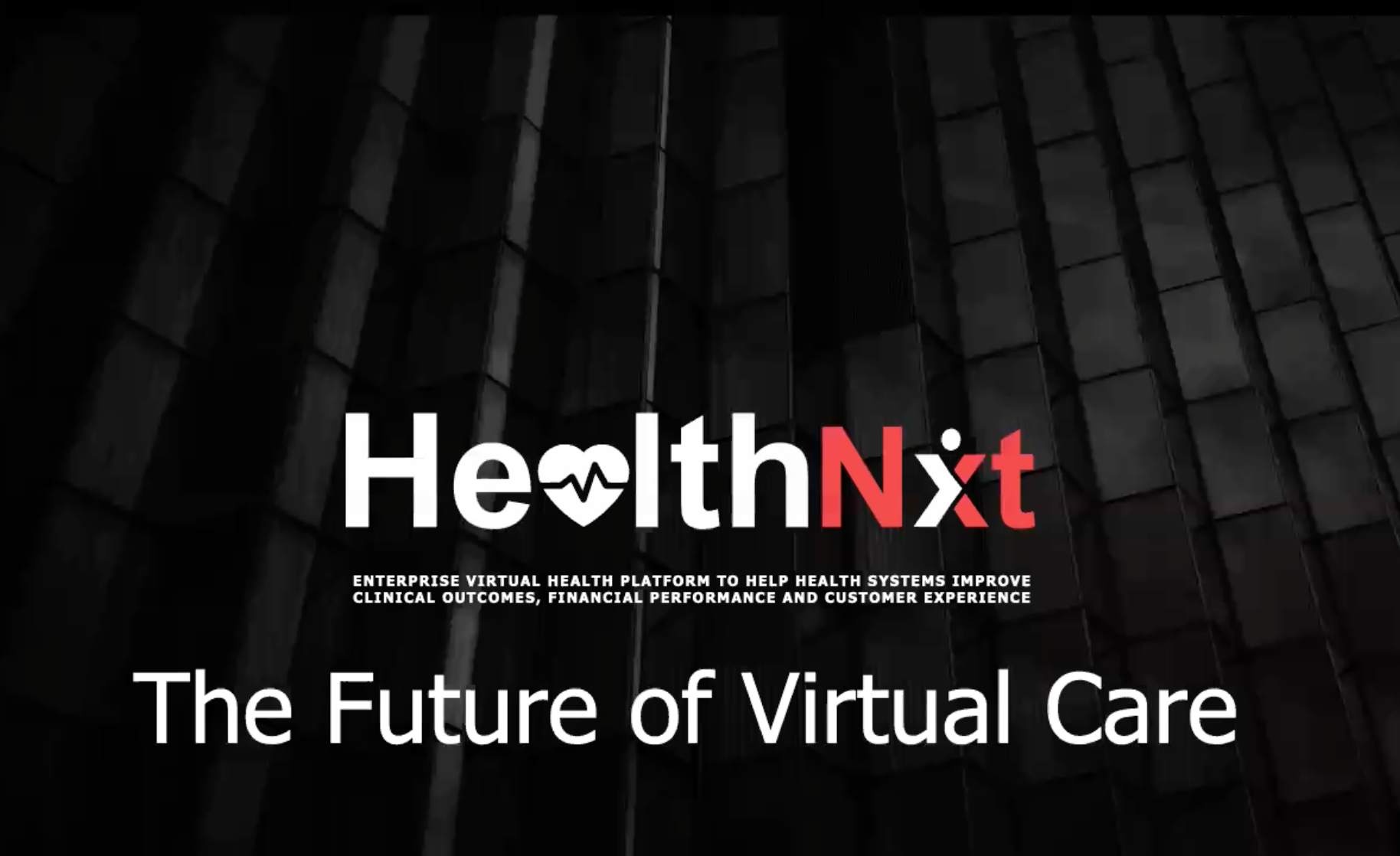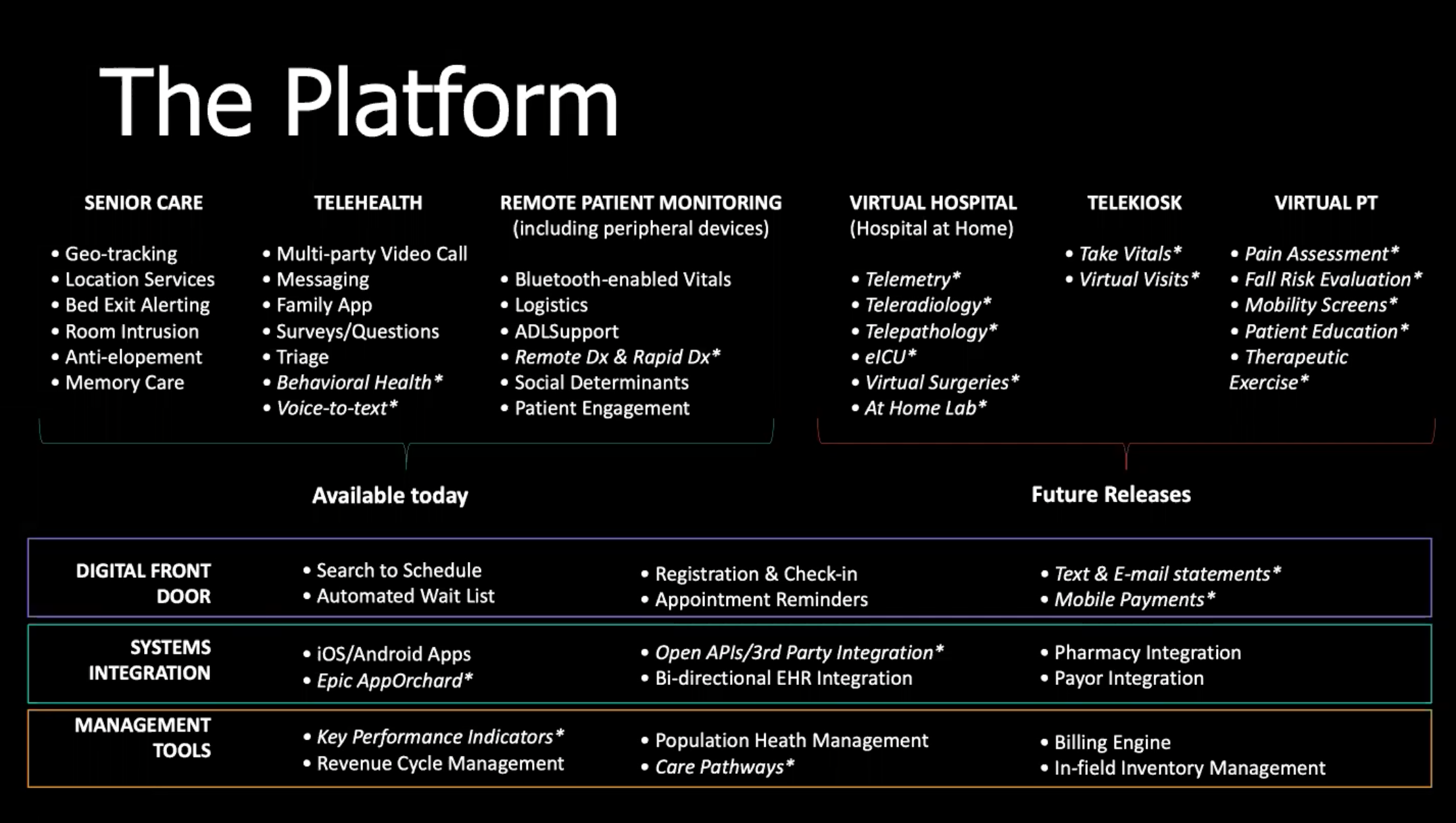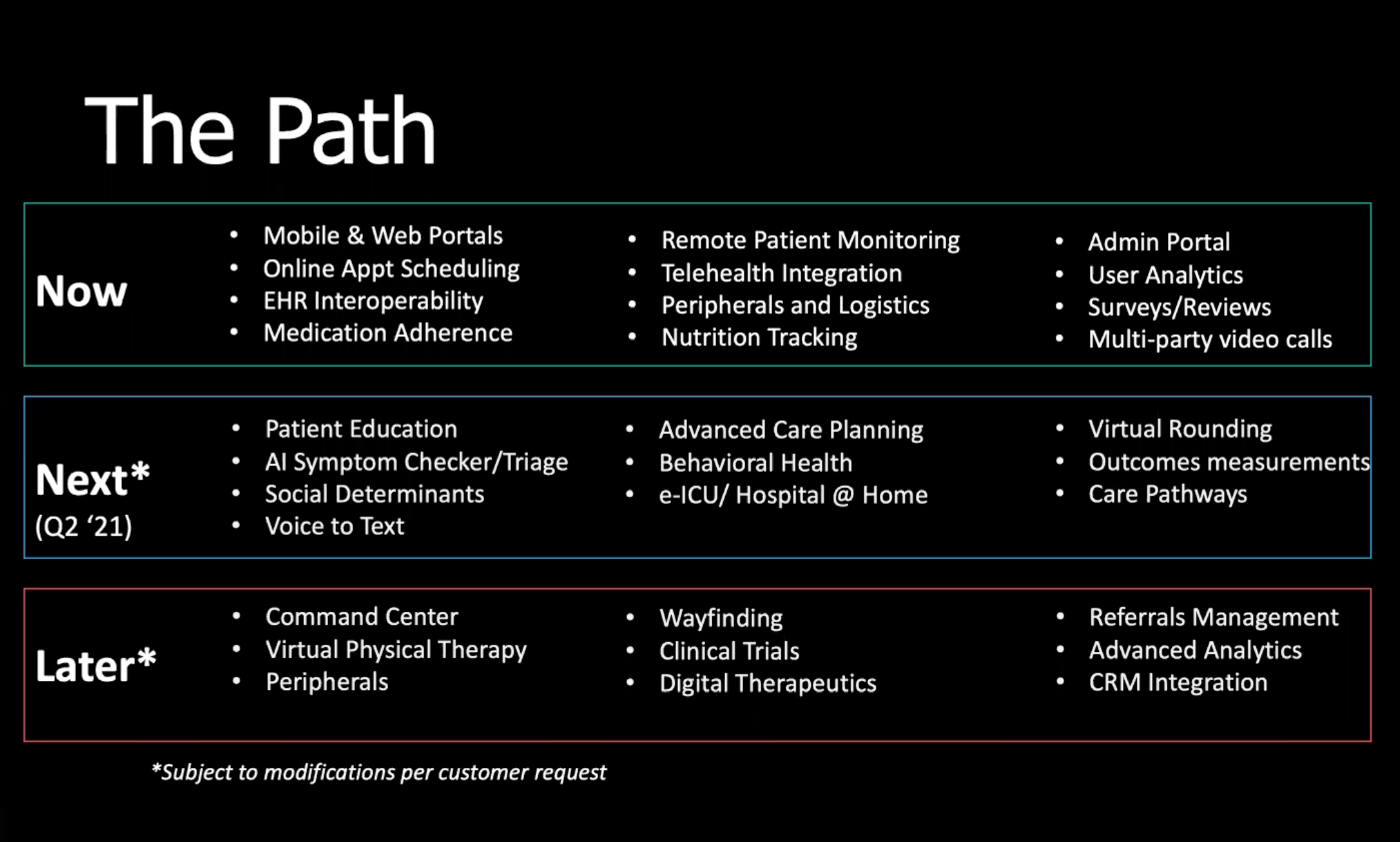The Future of Virtual Care


HealthNxt's Matt Lambert M.D. and Rachael England MPH. had the pleasure to attend a CHIME online focus group to discuss the future of virtual care with some of the leading CIOs in the country. HealthNxt is the virtual care platform created by The HCI Group and Tech Mahindra family. Alongside its chief digital officer, Ed Marx, who utilized his virtual care experience from the Cleveland Clinic, HealthNxt built out the agile virtual care platform. Similar to the way the EMR market was a decade ago, HealthNxt believe that platform play is the best way to go from here.

HealthNxt leverage their healthcare expertise at a level of design thinking and engagement wherever they can within their products. Taking a look at the HealthNxt platform currently, you can see the variety of areas that are covered. It is useful to not only talk about the thinking that has gone in to designing the platform, but also what our road map is and how it is evolving in real time. This is a message that might resonate a lot with many of us, as we think about the current shifting landscape. The platform itself is always delivered through a front door when possible, through a branding app.
The primary pieces of the platform build off the telehealth and remote patient monitoring solution. A remote patient monitoring example might be a bluetooth pulse oximeter, which can also be a CHF kit for more longitudinal management of Covid. The CHF kit would include the pulse ox, the heart rate monitor, the blood pressure cuff, as well as a digital scale to help track daily weight gains. Our clients can pick whichever disease specific kit they would like to deploy with that.
Additionally, there is ADL geo tracking RPM, memory care push notifications for medications, anti-elopement sensors on doors for seniors and in certain senior living situations sensors on the refrigerator or in the bathroom for fall detection. The ability to real time remote monitor not just vital signs that are disease specific, but also some real time RPM for ADP is a powerful combination. Combine that with telehealth being the immediate escalation point and it is even more powerful.

We thought about the functionality that's either here today with our platform or that we are planning on implementing very soon. This is related to the way that patients can connect through a digital first type of means. For instance, with something like a symptom checker as a virtual triage or even an asynchronous type of visit where predefined questions are asked of the patient, which is then submitted to a physician to return back to the patient with a diagnosis. This is something that should be on your radar to implement in our own organization.
This is how HealthNxt answers the question: what is virtual care? This is how we see it and we've embraced the fluidity of the market through the model you see above. If there are gaps that we can fill with technology, then we are always looking for ways to do that. In six months time, the model might look very different from today, but you can guarantee that we are continuing to learn, grow and adapt in a way that is entirely suited the current state of virtual care and needs of health providers.
Questions for leaders to consider
- How does your organization define virtual care and do you have a specific virtual care strategy?
- What is the current state of your telehealth solution?
- Are you using Remote Patient Monitoring?
- Do you have a Digital Front Door?
- How can you improve the experience for your patients and providers and what do you see as the future of Virtual Care?

